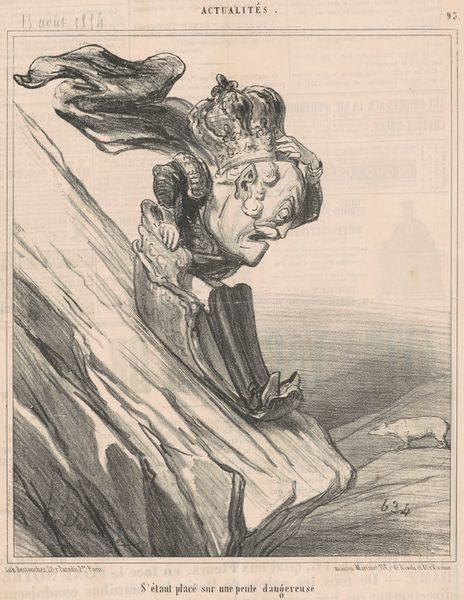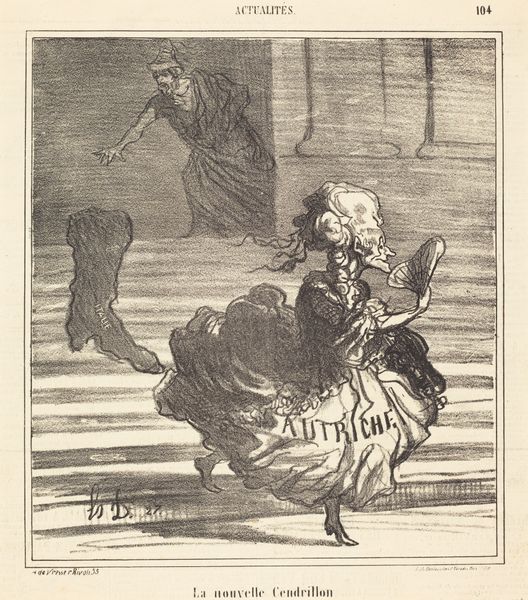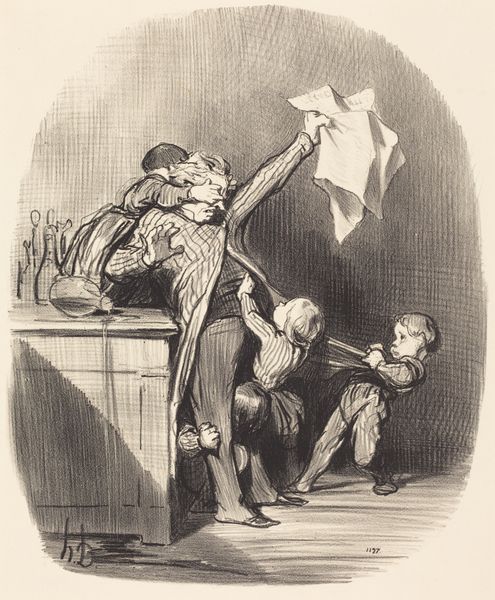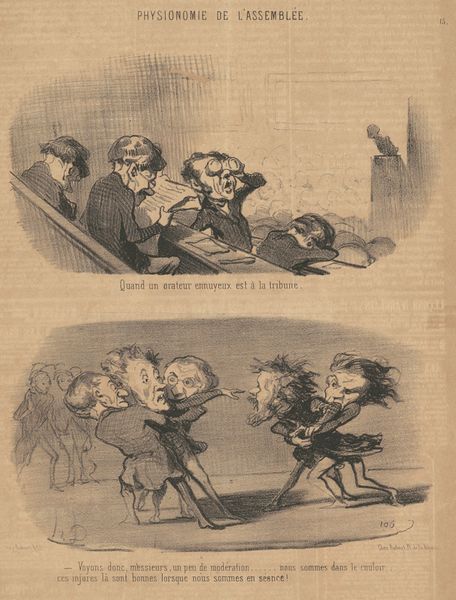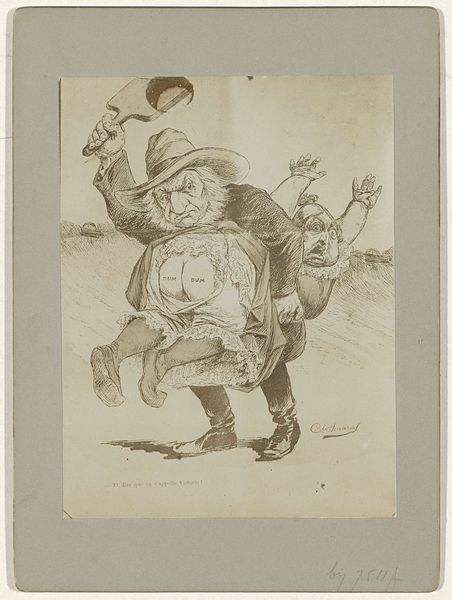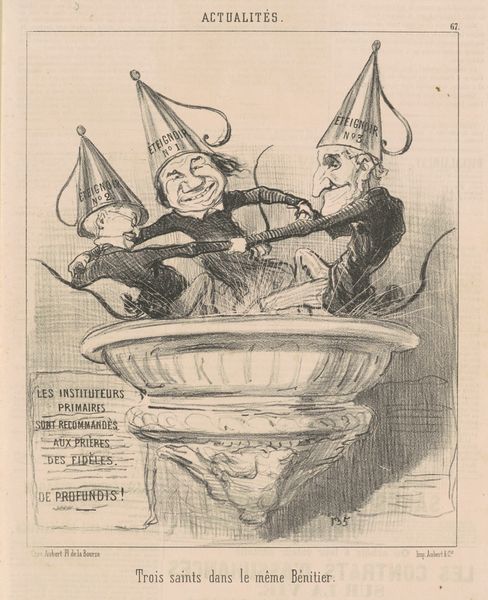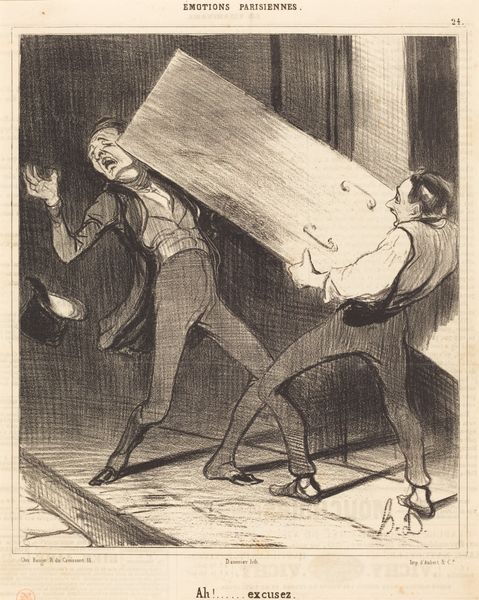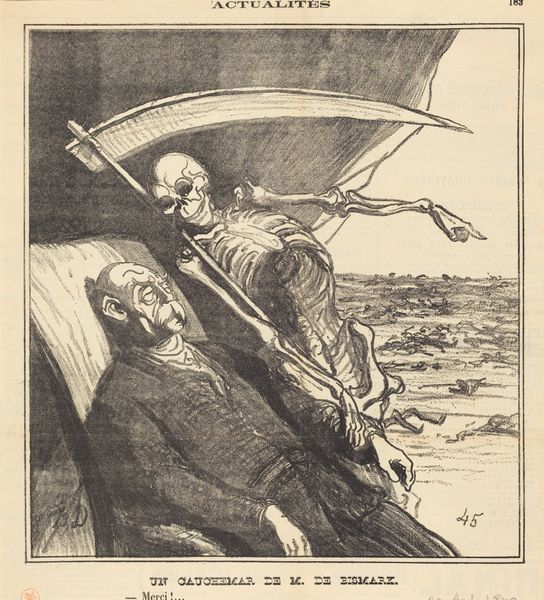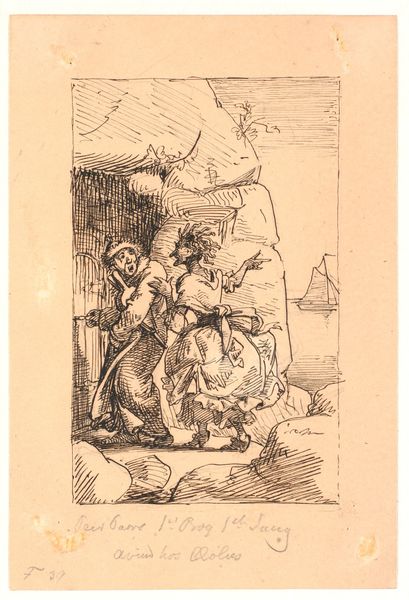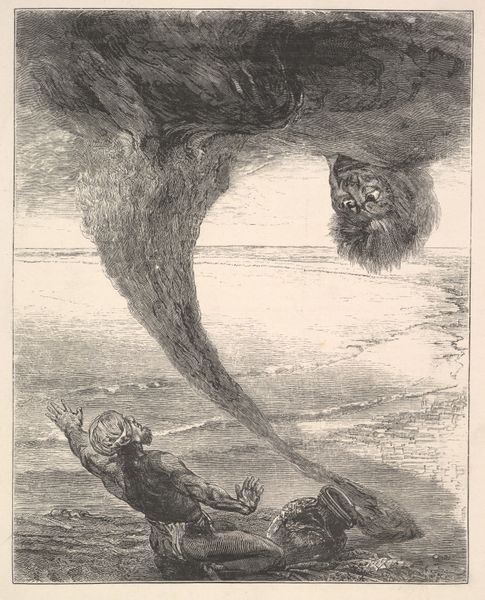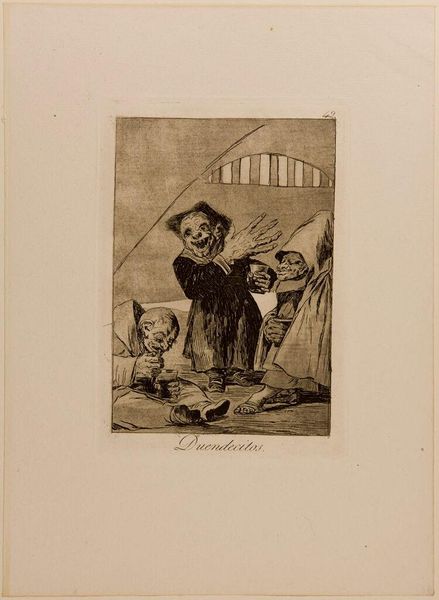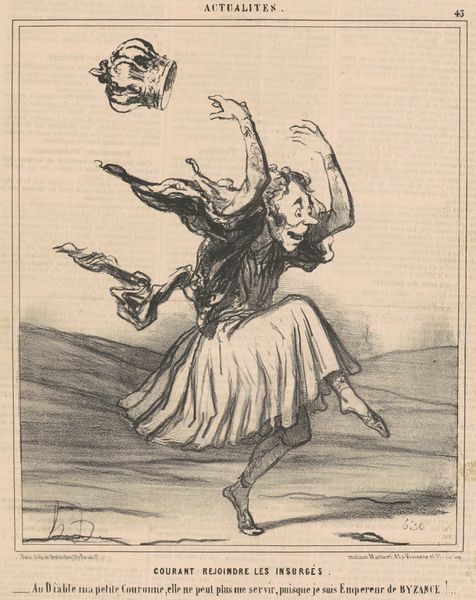
Copyright: National Gallery of Art: CC0 1.0
Curator: Honoré Daumier created this lithograph, "Un Chemin dangereux," in 1851. What’s your immediate reaction to it? Editor: The sheer steepness of the slope makes me uneasy. The characters, so clearly caricatured, seem engaged in a desperate, almost comical struggle against an unseen force, really making this pathway dangerous. Curator: Absolutely, the diagonal thrust dominates the composition, doesn't it? The use of hatching and cross-hatching intensifies the shadows, thus enhancing the sense of a difficult ascent. Consider the distorted facial features. Daumier amplifies certain traits, reducing the men to types. Editor: Those grotesque features hint at the satire embedded here. I notice "République Française" is printed above the looming figure at the top, presumably the prize. Given the date, this probably critiques the political climate following the 1848 revolution, doesn't it? Their climb looks doomed from the start. Curator: Precisely. Notice how Daumier positions each figure along the precarious incline? The composition pulls our eye to each caricature's struggle. Each figure conveys something specific. And the way Daumier employs the stark white paper to offset the inky darkness. A powerful graphic statement. Editor: The one at the bottom in the fool's cap really sells the tragicomic feel of the whole thing. They all appear driven by some collective madness towards a reward that seems so… distant, even unattainable. I think it speaks volumes about post-revolutionary disillusionment and how the people were lead along this dangerous pathway towards ruin. Curator: His manipulation of light and shadow not only creates form, but amplifies that tragicomic sentiment you mentioned. Notice also how the ink renders these political figures not as men, but allegorical figures trapped in the inescapable clutches of a failed project. Editor: Looking at the steep, textured pathway to a dubious "Republic," I understand Daumier’s print now less as historical record but an incisive commentary on power and ideology. Thanks to his skilled use of caricature, the figures, though specific to his time, become almost universal in what they portray. Curator: Yes, I agree, the success of Daumier here lies in both its formal strengths, and the ability of his print to transcend its specific context. His approach to space, line and volume, combined with its inherent historical meaning makes it truly powerful.
Comments
No comments
Be the first to comment and join the conversation on the ultimate creative platform.
